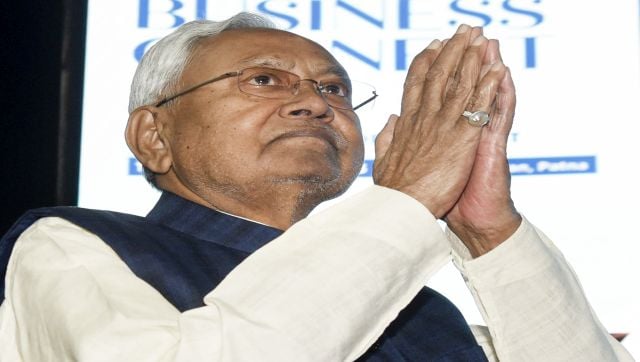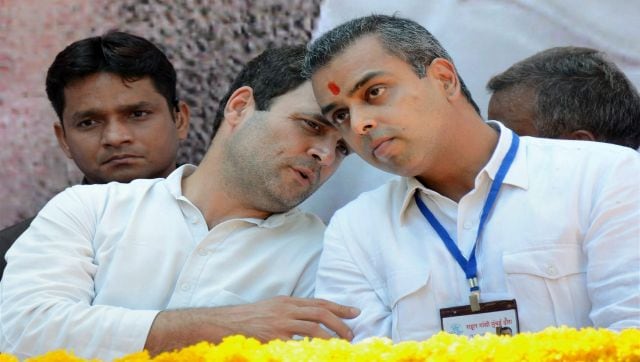If the National Register of Citizens (NRC) is the graveyard of Indian citizenship, the Citizenship Amendment Act (CAA) 2019 is the graveyard of Indian democracy. Both are organically related and cannot be read without. The citizenship crisis in Assam, now set to engulf the entire country, will forever change life, politics and social theory in South Asia.
The regime might understate and dismiss it on technicalities, but with the passing of the Citizenship Amendment Bill (CAB) 2019 by both houses of the Indian Parliament, we are being handed a new social contract. It is a new path, a new beginning for our democracy, one that makes our future an abyss. If the secular fabric of our Constitution is destroyed and the norms of citizenship are changed, which has already happened, we are no longer what we were.
The face of the crisis is this abyss. As once rightly noted by the historian Eric Hobsbawm, democracy is no measure for nature of states. Today Indian democracy seems to have proven that just right by showing how basic fabric of a democracy can be destroyed through the system itself.
There is an organic link between the NRC and CAA, which must be understood in the current context. In fact, they are two sides of the same coin with a similar political framework of exclusion. If CAA came out of the Hindu supremacist hearth of the Bharatiya Janata Party (BJP), Rashtriya Swayamsevak Sangh (RSS) and its allies, the NRC is the product of decades of xenophobia and chauvinism cultivated in Assam. Both have an inherently fascist, exclusivist logic. While NRC sought to exclude all "non-Assamese outsiders" from the citizenship framework, CAA aimed to exclude only the Muslims amongst them. One caters to pan-Indian Hindu nationalism, the other gives life to Assamese ethno-nationalism.
The leader of the Assam Movement (1979-85) galvanised all kinds of chauvinism and communalism that was already a part of our society and turned it into a mass movement. Decades later, NRC legitimised those mutual feelings. It is a well-known fact that the so called 'Bangladeshi' was the foreigner who was to be expelled, even exterminated. They say the Assamese were finally infused with some hope with the signing of the Assam Accord in 1985. However, what is often underplayed is that the events and outcomes of the 1980s injected Assamese nativism and the image of an "illegal Bangladeshi" in a much broader way into the public imagination. The curriculum around these found its way into classrooms, radios and streets before it found new meaning in the NRC machine.
Something similar happened as a result of the Ram Janmabhoomi movement in the late 1980s. The idea of India as an exclusive nation or 'homeland' for the Hindus took centre stage in the public discourse. It became a serious topic of discussion amongst the mainstream intelligentsia and political class, particularly after the demolition of the Babri Masjid in Ayodhya. Even the so-called secular forces began emulating the Hindu supremacist impulse. That story of saffron mobilisation and proliferation now finds one of it's greatest logical conclusions in the passing of the CAB.
In Assam, the opposition to the NRC is beyond the anti-secular or unconstitutional remit of the Act. It is a linear progression from the events of the 1980s, of the deeply-entrenched public imagination that Assam will be swept away by Bangladeshi immigrants. It is this absolutist position against immigrants that now stands pitted against the divisive Hindu-Muslim communalism of the BJP and Sangh. If the progressive Assamese ethno nationalists speak of the economic-cultural precarity of the indigenous people and the fear of the "Bengali outsider", the BJP and others push the idea of war of civilisations and the idea of the Muslim immigrants as "infiltrators". It is a battle between one template of otherisation versus another.
This hate for the bidexi (foreigner) has driven the protests to a point where we see a peculiar situation on the streets of Assam that mirrors the tumultuous days of the Assam Movement. From torchlight marches to slogans written on the gamusa (traditional Assamese scarf) with blood, history is being repeated with aesthetic precision.
The singular reason why the BJP's communal citizenship project is dangerous in the Assamese context is not because it will suddenly flood the state with "illegal Hindu Bangladeshis" (the CAA regularises only a section of the existing Hindu Bengalis, with a cut-off date of 31 December 2014). It is because the amendment threatens to tear apart the brittle stability of the state. It is not Narendra Modi, Amit Shah or Mohan Bhagwat who will suffer, for their fortunes are sealed safely in the larger national context, but the minority Bengali-speaking populations in Assam who will now have to live in a climate of fear, suspicion, uncertainty and simmering rage. It is not that they are new to such fatal churnings, but the tides of time had kept the lid on the bottle tightly fastened for sometime now. The CAA will now open this lid and let the ghosts of the past out. Fair to say that Assamese nationalism is entering a new phase of assertion and praxis, and so is the vulnerability that Assam's minorities reel under every day.
Suraj is a doctoral candidate in Sociology at the National University of Singapore. Angshuman is a Senior Researcher, Institute of Peace and Conflict Studies, Delhi.
December 14, 2019 at 03:43PM









No comments:
Post a Comment